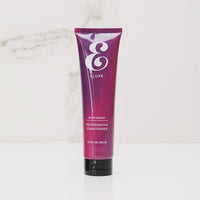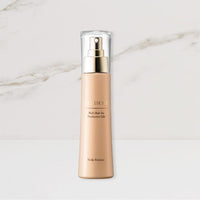How to Tell If You’re Hair Is Healthy [And How to Keep It That Way]
Most women would tell you they desire gorgeous, healthy hair. However, attaining the locks of your dreams is not always an easy task. Many of us dye or bleach our hair or brush it improperly, causing dead ends, frizz, and other damage. Chemicals, air pollution, and even genes can keep us from having the hair we desire.
The good news is that you don’t have to live with damaged hair forever. There are ways to repair damage and get the kind of hair you see in shampoo commercials. But first, we’ll go over the signs of healthy hair and damaged hair, as well as what steps you can take to fix common issues.
Signs of Healthy Hair
How do you tell if your hair is healthy? Here are some signs:
- It’s shiny. Dull, dry hair is usually unhealthy, but when there’s some shine to it, it means the natural oils from your scalp are distributed throughout your hair.
- It’s not tangled. When your hair is tangled, and you try to brush it out, you cause more damage. Then you start developing split ends and breakage. Regular hair cuts will help prevent this.
- You lose some hair. If you’re noticing a little hair in your brush, that’s a good sign. Hair goes through growth cycles, and it means new hair is coming in. However, if you’re losing what seems like too much hair, see your doctor.
- Your hair is growing. Speaking of hair growth, your hair should be growing at a rate of at least ¼ inch per month. Slower hair growth could be a sign of a medical condition, such as thyroid problems or a vitamin deficiency.
- It feels smooth. Dry, brittle hair lacks moisture, while smooth hair is properly moisturized and therefore healthy.
Types of Hair Damage
Now that you know the signs of healthy hair, what does unhealthy hair look like?
- Split ends. This is the most common type of hair damage. Split ends occur when the ends of your hair become dry and frayed. This can be caused by excessive styling, heat, friction, and poor diet.
- Mechanical damage. This refers to damage caused by the way you brush or comb your hair. Be gentle to avoid breakage.
- Damage from styling. It’s easy to curl or straighten your hair at home with the right tools, but these tools can also cause your hair to dry out. Treating your hair with protein can help repair the damage.
- Chemical damage. Changing up your hairstyle can be fun, but constantly dyeing, bleaching, or perming your hair can cause it to weaken. You can combat this by getting your hair professionally styled, and cutting split ends regularly.
- Sun damage. Spending too much time in the sun can damage your hair, causing it to become discolored, dry, and rough. You can prevent this by wearing a hat outdoors and using moisturizing shampoo and conditioner, which wash hair without stripping it of moisture.
- Stress damage. Being overly stressed can also cause damage to your hair, partly because too much stress can cause us to neglect our diets and hair care routines. You can keep hair healthy by trimming the ends regularly and using moisturizing products.
What Are the Worst Things for Your Hair?
To keep hair healthy, avoid these bad habits.
- Washing hair with too hot water. When washing and rinsing your hair, turn down the water temperature a notch. If it’s too hot to the touch, it’s too hot for your hair and can damage it. A good rule of thumb is to use hot water to rinse out shampoo and cold water to rinse out conditioner. This creates a healthy shine.
- Brushing wet hair. Wet hair is heavier and more delicate, making it prone to breakage. Your best bet is to brush hair before getting it wet and then use a Wet Brush or other brush made specifically for detangling wet hair.
- Coloring hair too often. Chemical processes can cause hair to dry out and become brittle, so take a break once in a while. If you enjoy changing up your hair color, though, talk to your stylist about other options, such as hair extensions.
- Skipping haircuts. Even if you think your hair looks fine, you should get split ends trimmed at least every three months. If you wait too long, your damage will increase and your hair won’t grow as much.
- Using tight hairstyles. Ponytails and buns can cause you to pull hair from its roots. If this is your favorite hairstyle, avoid ties with metal parts and don’t put your hair up every day.
How to Repair Hair
The damage is done—now what? If you know why your hair is damaged, you can easily repair it. Here are some tips to get you started.
Split Ends
You’ll start seeing split ends if you wait too long between haircuts. Your best bet is to make an appointment with your hairdresser and get those split ends cut at least every three months. Until then, a hair mask or conditioner treatment can at least hide the damage.
Damage from Dyeing
The best course of action here is to limit dyeing. Dyeing your hair too often can dry out hair, causing it to look dull and rough. Replenish your hair’s moisture with olive oil. You should also use color-safe products on your hair to keep color in place for longer.
Heat Damage
Using blow dryers and other tools too often can dry out hair. Add some moisture with coconut oil. You should also avoid heat altogether, and air dry your hair, if possible.
Foods for Healthy Hair
You know now how to tell if your hair is healthy. So how do you keep it that way? Here are some nutrient-rich foods to incorporate into your diet to promote healthy hair growth:
- Eggs
- Nuts
- Berries
- Spinach
- Avocados
- Sweet potatoes
- Beans
- Meat
- Fatty fish
- Shrimp
- Oysters
Contact Us Today
Now that you know the signs of healthy hair and damaged hair, you can determine what type of hair you have and improve your diet and hair care routine. Eluxe can help you keep your hair healthy. Check out our products and place an order today.


![How to Tell If You’re Hair Is Healthy [And How to Keep It That Way]](http://gloweluxe.com/cdn/shop/articles/How_to_Tell_If_You_re_Hair_Is_Healthy_And_How_to_Keep_It_That_Way_{width}x.jpg?v=1625718487)







